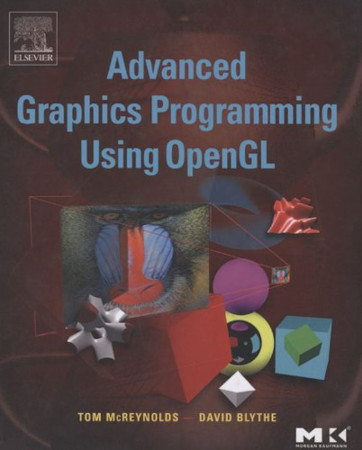

Most ebook files are in PDF format, so you can easily read them using various software such as Foxit Reader or directly on the Google Chrome browser.
Some ebook files are released by publishers in other formats such as .awz, .mobi, .epub, .fb2, etc. You may need to install specific software to read these formats on mobile/PC, such as Calibre.
Please read the tutorial at this link. https://ebooknice.com/page/post?id=faq
We offer FREE conversion to the popular formats you request; however, this may take some time. Therefore, right after payment, please email us, and we will try to provide the service as quickly as possible.
For some exceptional file formats or broken links (if any), please refrain from opening any disputes. Instead, email us first, and we will try to assist within a maximum of 6 hours.
EbookNice Team

Status:
Available4.3
17 reviews
ISBN 13: 9780080475721
Author: McReynolds T, Blythe D
Today truly useful and interactive graphics are available on affordable computers. While hardware progress has been impressive, widespread gains in software expertise have come more slowly. Information about advanced techniques—beyond those learned in introductory computer graphics texts—is not as easy to come by as inexpensive hardware. This book brings the graphics programmer beyond the basics and introduces them to advanced knowledge that is hard to obtain outside of an intensive CG work environment. The book is about graphics techniques—those that don't require esoteric hardware or custom graphics libraries—that are written in a comprehensive style and do useful things. It covers graphics that are not covered well in your old graphics textbook. But it also goes further, teaching you how to apply those techniques in real world applications, filling real world needs.
- Emphasizes the algorithmic side of computer graphics, with a practical application focus, and provides usable techniques for real world problems.
- Serves as an introduction to the techniques that are hard to obtain outside of an intensive computer graphics work environment.
- Sophisticated and novel programming techniques are implemented in C using the OpenGL library, including coverage of color and lighting; texture mapping; blending and compositing; antialiasing; image processing; special effects; natural phenomena; artistic and non-photorealistic techniques, and many others.
Computer Graphics Intro and OpenGL
Concepts
Geometry Representation & Modeling
3D Transformations
Color, Lighting, and Surface Attributes
Rasterization
Images as Primitives
OpenGL Virtues
Image Processing
Texture Mapping
Window System Integration
Hardware Implementations of the Pipeline
Multiple Rendering Passes
Texture Mapping
Lighting
Blending and Compositing
Transparency
Antialiasing
Image Processing
Transform Techniques
CAD & Modeling
Scene Realism
Natural Phenomena
Special Effects
Illustration and Artistic Techniques
Scientific Visualization
Performance Measurement & Tuning
Visual Simulation and Entertainment
Portability Considerations
OpenGL Extensions
Tags: McReynolds T, Blythe D, Graphics, Programming